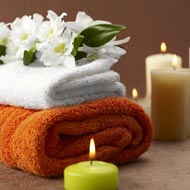- Bergamot Essential Oil
- Black Pepper Essential Oil
- Cajeput Essential Oil
- Camomile Oil
- Cedarwood Essential Oil
- Citronella Essential Oil
- Clary Sage Essential Oil
- Coriander Oil
- Lavender Essential Oil
- Rose Oil
- Eucalyptus Oil
- Fennel Essential Oil
- Frankincense Essential Oil
- Geranium Oil
- Grapefruit Oil
- Essential Oil Jasmine
- Juniper Berry Oil
- Lavandin Oil
- Lavender Oil
- Lemon Oil
- Lemongrass Oil
- Mandarin Oil
- Melissa Oil (Officinalis)
- Cypress Oil
- Aroma Essential Oil
- Aromatherapy And Essential Oils
- Avocado Oil Benefits
- Oil Healing Properties
- Essential Lemon Oil Health Benefits
- Lemongrass Essential Oil Health Benefits
- Mandarin Essential Oil Health Benefits
- Marjoram Essential Oil Health Benefits
- Massage Body Oils Health Benefits
- Melissa Essential Oil Benefits
- Essential Myrrh Oil Health Benefits
- Natural Essential Oil Health Benefits And Uses
- Neroli Essential Oil
- Niaouli Essential Oil
- Essential Oils And Uses
- Organic Essential Oils
- Patchouli Essential Oil
- Peppermint Essential Oil
- Petitgrain Essential Oil
- Rosemary Essential Oil
- Sandalwood Essential Oil
- Sandalwood Massage Oil
- Sunflower (Black) Seed Oil
- Tangerine Oil
- Tea Tree Oil Uses
- Thyme Essential Oil
- All Natural Oil
- Olive Oil Products
- Almond Oil For Hair,Massage,Cooking And Aromatherapy
- Best Olive Oil In The World - Reviews
- Avocado Oil
- Aromatherapy Essential Oils And Blends
- Essential Oils Aromatherapy
- Catnip Essential Oil
- Spikenard Essential Oil
- Chocolate Essential Oil
- Carrot Seed Essential Oil
- Tuberose Essential oil
- Manuka Essential Oil
- Yarrow Essential Oil
- Galbanum Essential Oil
- Linden Blossom Essential Oil
- Oregano Essential Oil
- Ravensara Essential oil
- Ylang Ylang Essential Oil
- Wintergreen Oil
- Helichrysum Oil
- Clove Oil
- Spearmint Essential Oil
- Pine Essential Oil
- Lime Essential Oil
- Lemon Verbena Essential Oil
- How Different Are Mint Oil And Peppermint Oil?
- Vegetable Oils
Vetiver Oil
Vetiver is also known as the 'Oil of Tranquility' and is native to India and Sri Lanka. In India it is called khus khus and is valued immensely for its grass and roots. The vetiver plant is a tall grass that grows naturally in the wild in hot climates.
The grass can grow up to 1.5 meters in height and the roots nearly 4 meters underground. Vetiver grass is highly fragrant and is related to other similar grasses such as lemon grass and citronella.
Ancient South Indian documents show that vetiver has always been used in many different ways. The grass was used to make thatched mats, fans, baskets, and screen and the aromatic vetiver essential oil was used in perfumes and in Ayurvedic treatments. Nowadays, high-end perfume houses in the West use vetiver in most of their perfumes and products not only because of its distinct aroma but also because it is highly soluble in alcohol. With almost a hundred different components, vetiver oil aromatherapy is an in-demand product all over the world.
Vetiver Oil Uses
Vetiver fragrance oil is extracted from the roots of the vetiver plant. These roots have to be at least 18 months old before they are dug up and cleaned. After drying them and cutting them up, they are steam distilled for nearly a day. What is left behind is a thick, brown, viscous oil that smells woody, smoky, earthy, and comforting. It is considered a distinctly masculine scent in the perfume and fragrance industry.
Besides perfumes, vetiver oil uses are quite wide ranging. It boasts a number of health benefits such as being an anti-septic, anti-spasmodic, a sedative and a relaxant. If you feel nervous and jumpy, inhaling a few drops of vetiver oil can calm you down almost instantly. There have been reports on the use of vetiver oil on patients and children with ADHD. Due to its tension-alleviating and relaxing properties, vetiver oil fragrance has been seen to help reduce the symptoms of ADHD. However, much more research still needs to be done before reaching any conclusive proof. Vetiver oil can be used in different ways. You could put a few drops in a diffuser and spread the aroma in a room or pour some oil mixed with grape seed oil into your bath for a relaxing soak.
Keep in mind that vetiver oil has a strong scent and using even a few drops at a time is effective enough. Vetiver oil is used as an anti-inflammatory and can soothe muscle and joint pain along with rheumatism and arthritis. Vetiver oil skin benefits have been well documented as well. Vetiver oil when used on the skin, has anti-aging benefits and can prevent wrinkles and stretch marks. As an ingredient in soaps, lotions, and creams, vetiver oil can also treat external wounds scars, and burns thanks to its anti-bacterial and cicatrisant properties. It helps in skin cell regeneration and prevents wounds from becoming septic. Vetiver oil can balance out an oily skin as well as make dry skin softer. Acne and other skin problems are also reduced with the use of vetiver oil.
In ancient Ayurveda, vetiver oil has long since been used to treat heat strokes, fevers, headaches, improve energy levels and reduce thirst. You can use vetiver oil as massage oil but only after mixing it with some other carrier oil. Vetiver oil blends well with almond oil and wheatgerm oil. Pure vetiver oil is also extremely expensive to make and many producers mix it with other oils to make the process cheaper. However, such blends will never have the same benefits and effects as pure vetiver oil does. It is worth the time and investment involved to find a reputed distributor and pay a premium for the real vetiver essential oil. When using any aroma oil, always test it on a small patch of your skin first. If no adverse reaction occurs, you can go ahead and use it as necessary. Always consult a trained aroma therapist before using any essential oils.
 Find Pose
Find Pose

